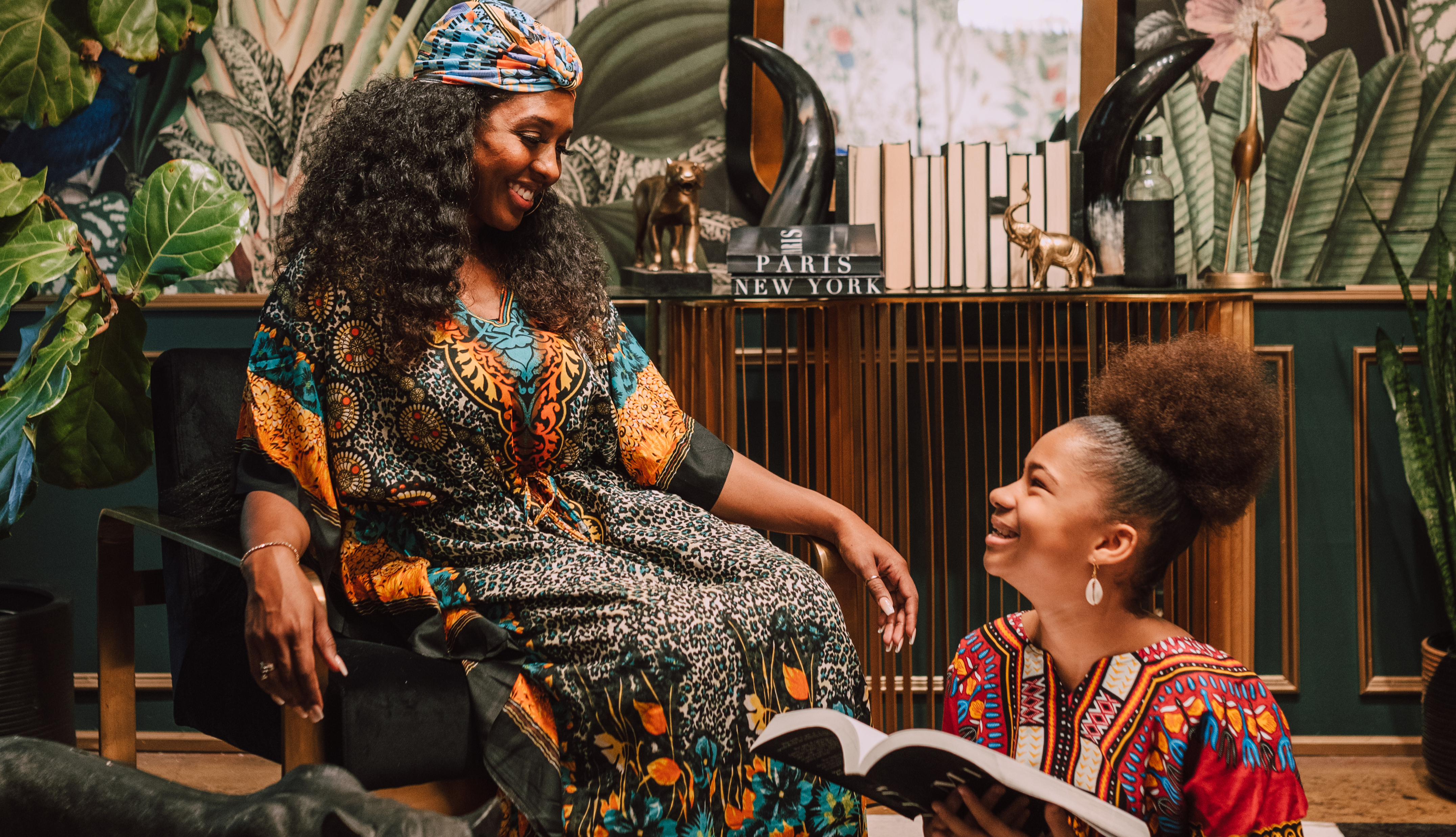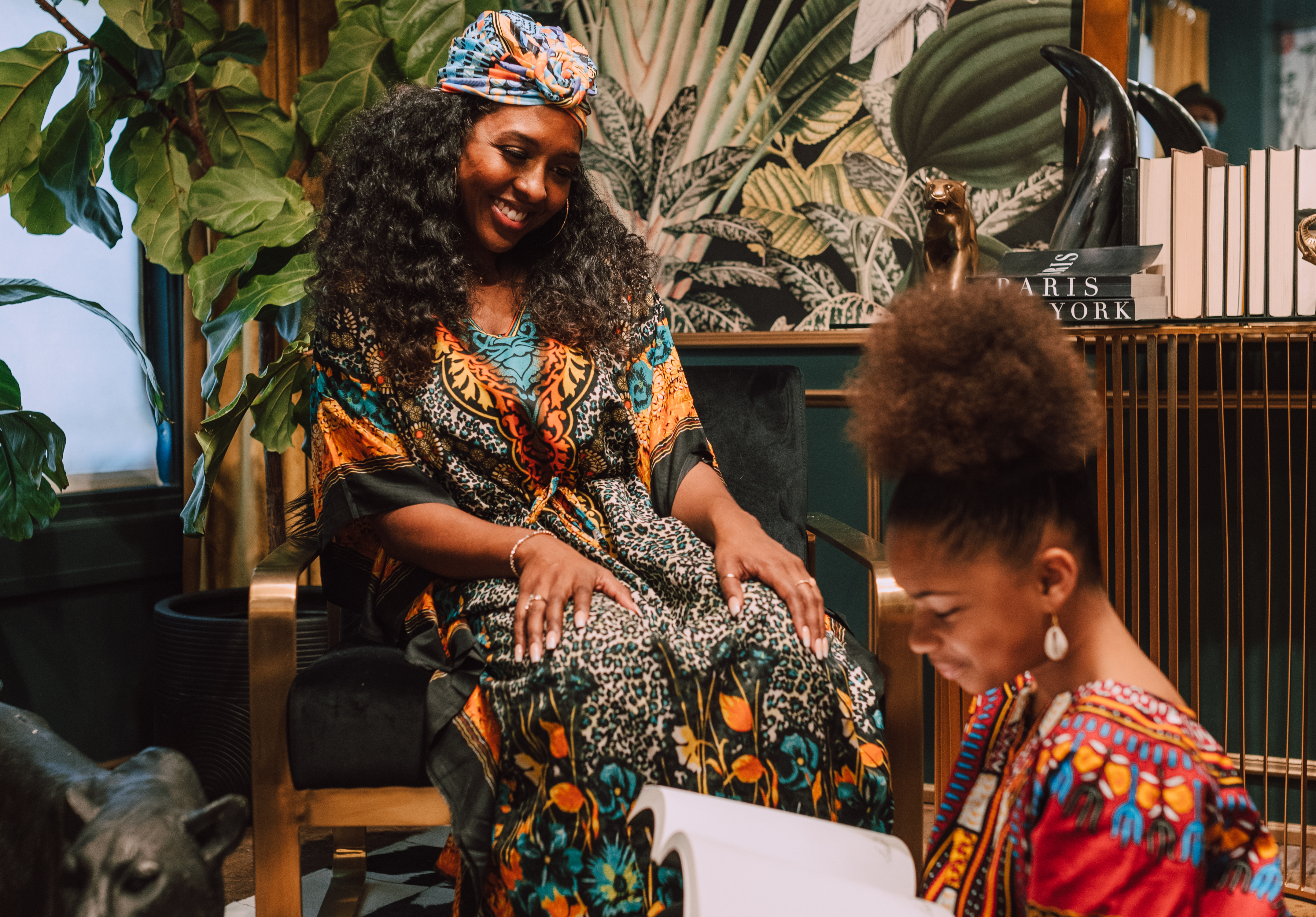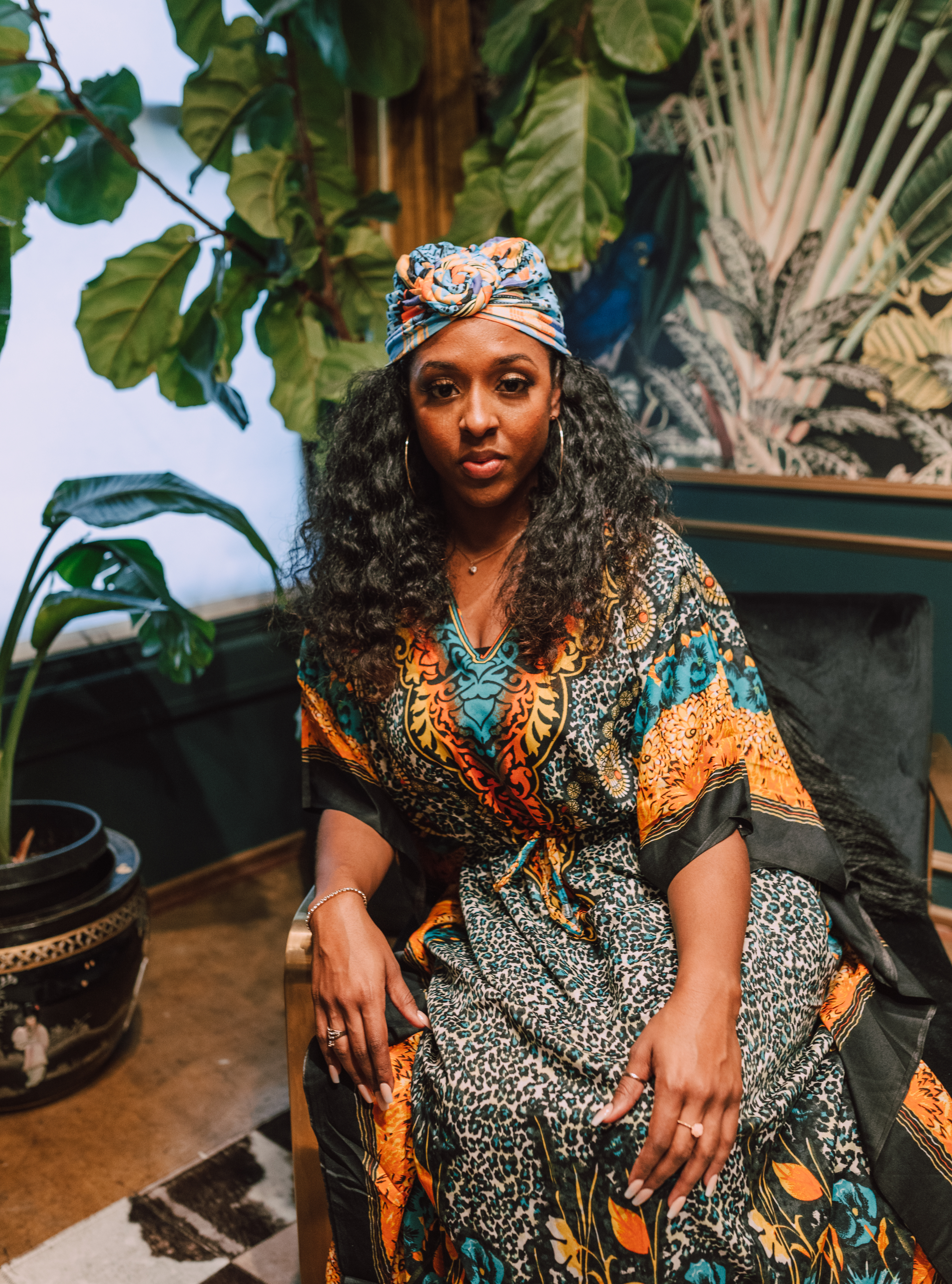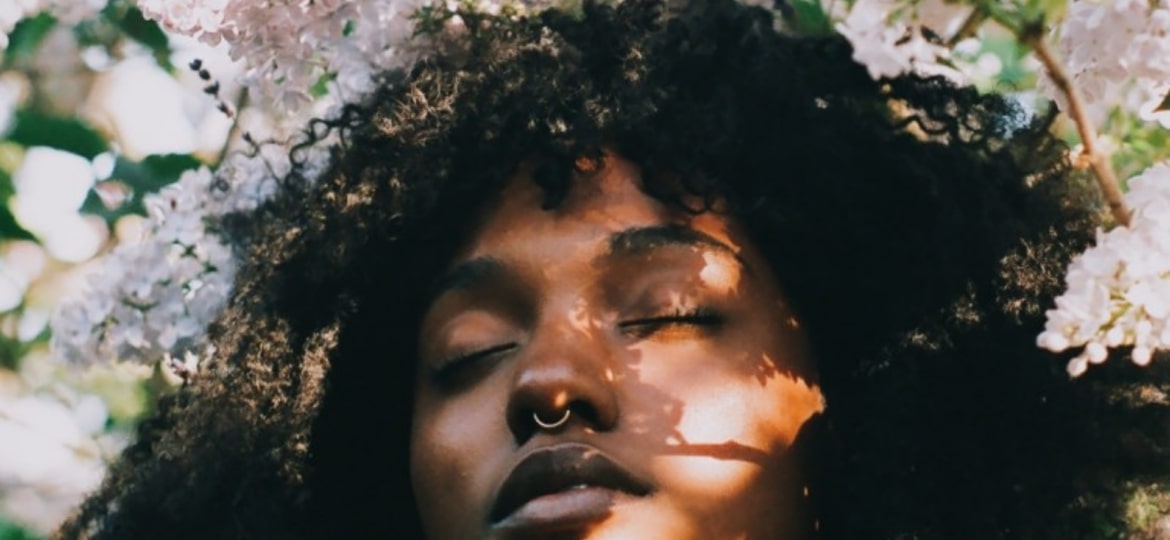September 8, 2024

By Manuella Eken
When I think of boubous, all my senses are awakened – the smell, the feel of the intricate embroidery beneath my fingers, and the stunning beauty they possess.
My mom taught me to love my heritage without saying a word, through her boubous. The excitement and fierté on her face as she holds a beautifully crafted, high-quality garment, asking and answering herself, “Sarah, do you know where I got this? From Benin.” That memory remains deeply cherished. It wasn’t until I grew older that I truly understood the pride she felt in those rich, vibrant fabrics.
My mother has a wide variety of boubous, ranging from elegant styles that she wears for special occasions, to more affordable, lightweight fabrics that she wears for everyday use. I fondly remember the boubous she wears daily, often accompanied by the mouth-watering aroma of “soupou” that she cooks on warm summer days. To me, boubous are more than just garments; they carry memories woven into my identity.

Reflecting on the past, I realize now that I never truly appreciated the significance of boubous. At one point, I even swore I’d never wear one, holding Western society in such high esteem. It’s a bit embarrassing to admit how little regard I had for my own roots. But as I’ve grown older, I’ve come to fully embrace the invaluable essence of Africa. Both Africa and boubous embody the profound beauty of identity.
Now, let’s delve into the history of boubous, also known as Bubu and Grand Boubou. This exquisite and versatile garment, worn by both men and women, features a loose fit, intricate embroidery, and stunning colors. Deeply ingrained in West African societies for centuries, boubous are crafted from high-quality textiles like cotton or silk and hand-embroidered to showcase the exceptional skills and creativity of local artisans. They are a favored choice for both everyday wear and special occasions, symbolizing pride and elegance. Boubous are timeless pieces that transcend generations.

When we talk about transcending generations, boubous have become popular among millennials and Gen Z. Thanks to social media, we are seeing the rise of relatable and sometimes hilarious content about our generation being the new aunties. Social media content doesn’t just stop there; it also includes tutorials on how to wear and style boubous. It didn’t take viral TikTok videos to influence my love for boubous. I am just happy to casually wear them and appreciate their versatility.
I now fully understand the pride and excitement on my mom’s face as she flaunts herself in this beautiful attire. I thank my mom and many other African women for showing us that boubous are a symbol of identity, pride, and artistic expression. Boubous are significant as it honors the rich cultural heritage of West Africa and the dedicated artisans.

Manuella Eken
Editor
Born in Cameroon and having lived in various cities including Brussels, London, and New York, Manuella recently settled in Canada. Holding a master's degree in finance and business management, she currently works in project management. Passionate about literature, she has also founded a community of readers to share their diverse interests.
As the founder of the "WhereTheReadersMeet"; Book Club, she has dedicated her life to creating spaces where readers can come together to explore the infinite worlds of literature. Manuella is driven by the desire to share her passion for reading and to foster enriching discussions withinher community of readers.





